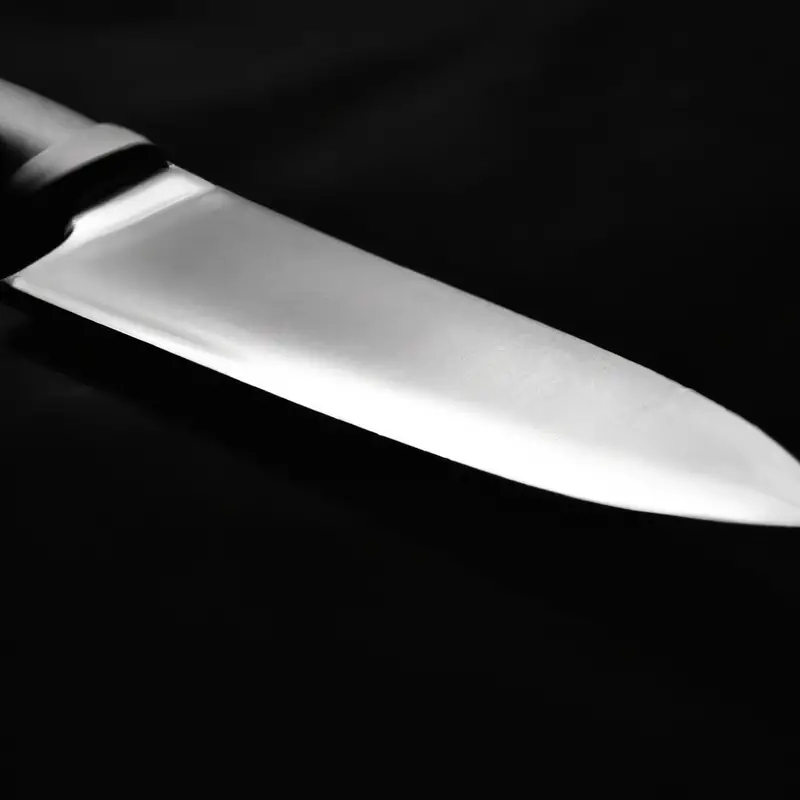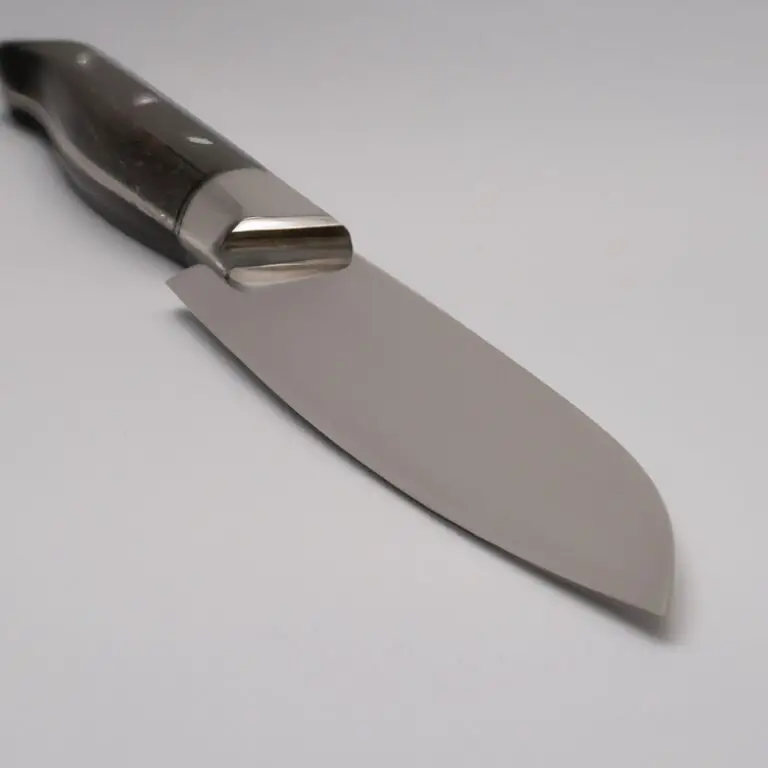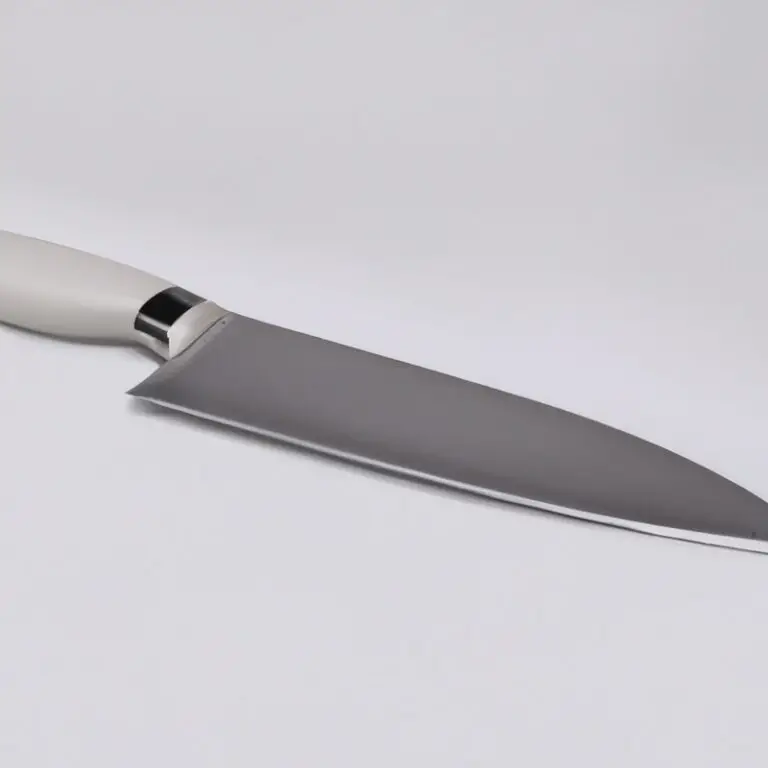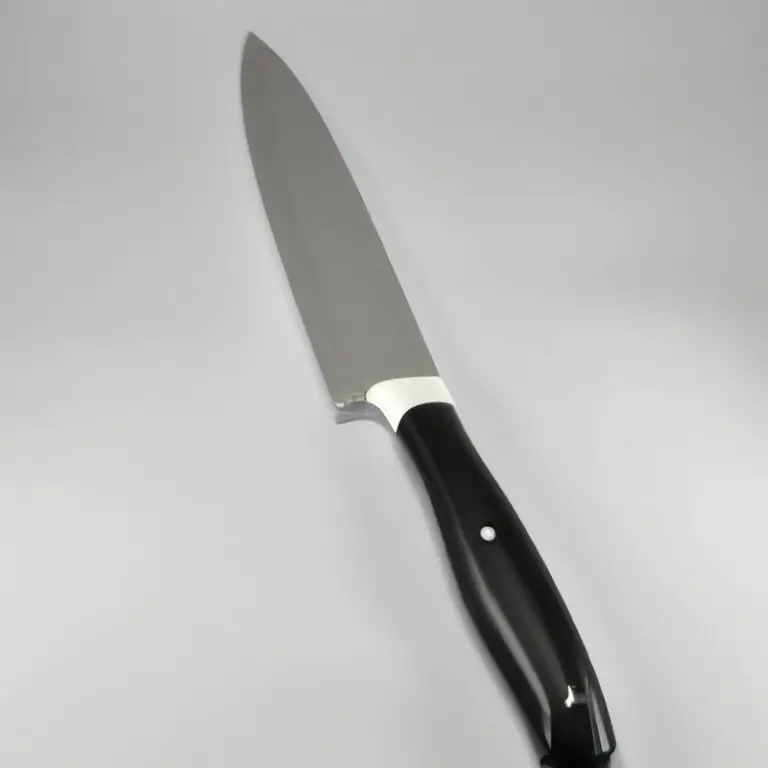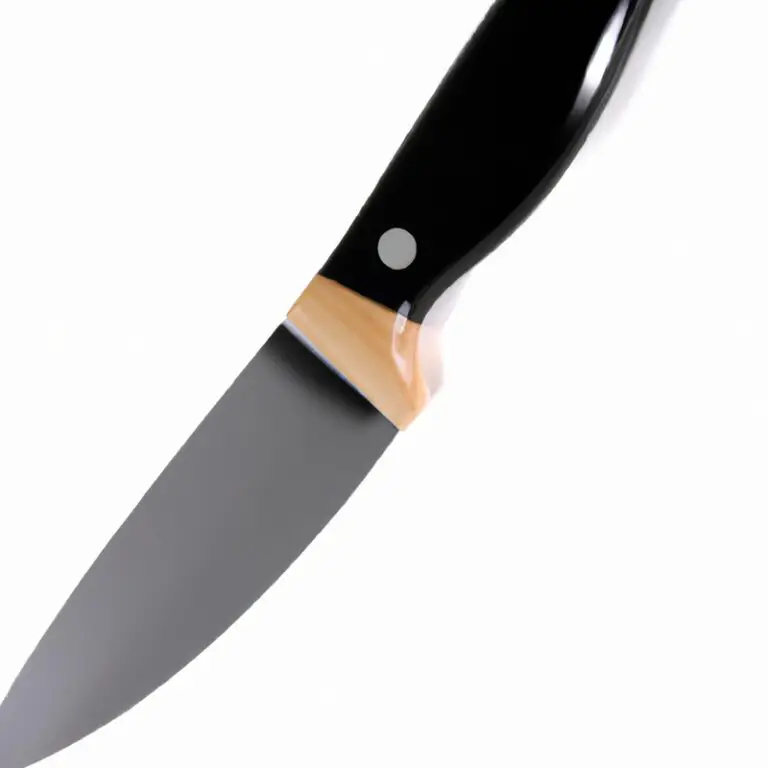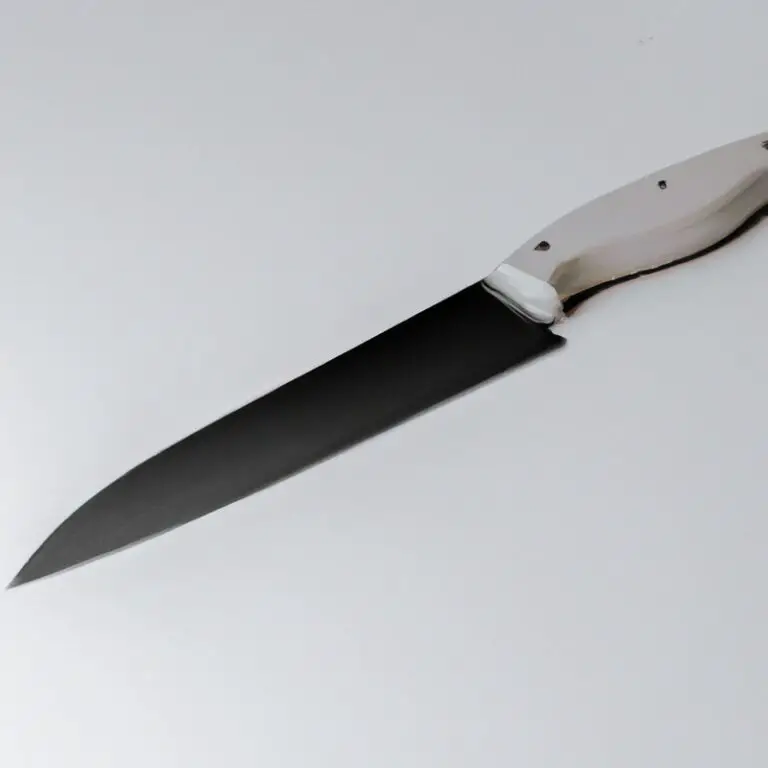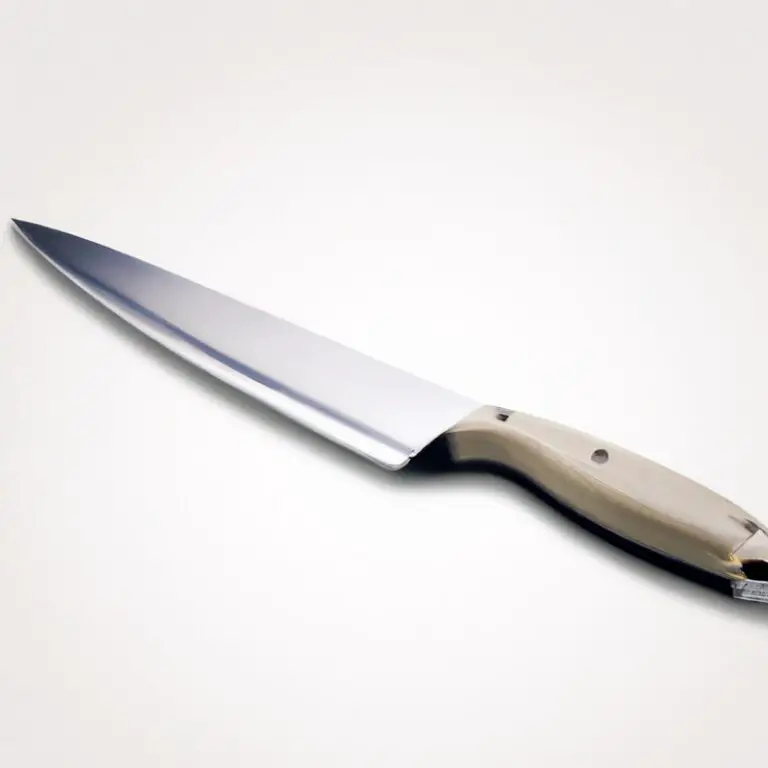How To Properly Use a Chef Knife For Chopping?
Key Takeaways:
- Hold the knife with a firm grip and use your non-dominant hand to hold the food steady.
- Keep the blade of the knife at a 20-degree angle and use a rocking motion to slice through the food.
- Avoid chopping too quickly or forcefully, which can cause injury or damage to the knife.
- Always use a sharp knife and maintain it regularly to ensure optimal performance.
Have you ever struggled with chopping ingredients in the kitchen? Do you worry about injuring yourself while using a chef knife?
Learning how to properly use a chef knife for chopping can not only improve your cooking skills but also ensure your safety while handling sharp tools.
In this article, I will guide you through the anatomy of a chef knife, proper grip techniques, choosing the right cutting board material, and the art of mastering the rocking technique. With these tips and tricks, you’ll soon be a pro at handling a chef knife in the kitchen.
| Step | Description |
|---|---|
| 1 | Hold the chef knife with your dominant hand and pinch the blade just above the handle with your thumb and forefinger. |
| 2 | Position the food item to be cut on a cutting board and firmly grip it with your non-dominant hand for stability. |
| 3 | Keep the tip of the knife on the cutting board and lift the handle while bringing the blade down and through the food item in a smooth, controlled motion. |
| 4 | Repeat the motion by lifting the knife and bringing it down through the food item, creating an even, consistent chop. |
| 5 | For larger food items, such as potatoes or onions, first cut the food item in half and then chop each half individually. |
| 6 | Be sure to keep the knife blade sharp to prevent slipping and to make chopping easier and more efficient. |
Understanding the anatomy of a chef knife and its purpose in the kitchen
The anatomy of a chef knife includes a blade with a sharp edge, a pointed tip, and a length of typically 8 to 10 inches. The blade is made of high-quality steel for durability and strength.
The handle of the knife is ergonomically designed to provide a comfortable grip.
The purpose of a chef knife is to chop, slice, and dice ingredients with precision and speed. The sharpness of the blade enables effortless cutting and the pointed tip allows the chef to work with small or intricate ingredients.
The length of the blade provides versatility in chopping a variety of foods.
Understanding the anatomy of a chef knife and its purpose in the kitchen is essential for safe and efficient use of the knife. Knowing how to properly handle and position the knife while chopping is crucial for avoiding accidents and injuries.
By mastering the basic techniques, one can become proficient in using the chef knife, which can be a valuable tool in any kitchen.
Proper grip techniques to optimize control and prevent accidents while chopping
To use a chef knife properly, it is essential to have the right grip technique. A proper grip technique enhances control and minimizes the chances of accidents while chopping.
Here are some tips:
- Grip the handle firmly without gripping it too hard or tightly.
- Position your thumb at the back of the blade and your other fingers around it.
- Keep your fingers away from the blade’s edge to avoid cutting or slicing them.
- Place the forefinger on the blade’s spine, and the thumb at the blade’s bottom before chopping to add balance and control.
- Avoid gripping the knife in the middle of the blade as it will decrease your control and lead to accidents.
If you are unsure about your grip or need more guidance, it is advisable to take a course or watch instructional videos from professionals for proper guidance.
Choosing the right cutting board material based on the blade of your chef knife
Choosing the right cutting board material is crucial for maintaining the sharpness of your chef knife. Different materials have varying levels of hardness that can either damage or preserve the blade.
Wooden cutting boards are a popular choice amongst chefs as they can absorb the impact of the blade without dulling it.
However, they require consistent maintenance to prevent bacterial growth. Plastic cutting boards are affordable and easy to clean, but they are less durable and do not absorb shocks well, causing the blade to dull faster.
Bamboo cutting boards have similar qualities to wooden ones, but they are more sustainable and environmentally friendly.
Glass and ceramic cutting boards are not recommended as they are too hard and can quickly damage the blade of your knife. When choosing a cutting board material, opt for a wooden or bamboo board for harder blades and plastic for softer ones.
Additionally, ensure that the material is appropriately maintained to prevent bacteria growth and preserve the sharpness of your chef knife.
Mastering the rocking technique for efficient chopping and maximal precision
Mastering the rocking technique is essential for efficient chopping and maximum precision with your chef knife. Start by gripping the handle firmly and guiding the blade in a forward and backward motion, allowing the curved edge to rock back and forth.
Keep your other hand on top of the blade for added stability and control.
Practice small chopping motions at first and gradually increase the speed and range of your movements. Remember to focus on keeping your fingers out of harm’s way and always maintain a steady rhythm to prevent accidents.
Once you have mastered this technique, you’ll notice a significant improvement in your chopping speed and accuracy.
How to correctly hold and position the food item to be chopped for optimal results
To achieve optimal results while chopping food items, it is crucial to hold and position them correctly. The correct way to hold the food item depends on its shape and size.
For smaller ingredients, like garlic and herbs, use a claw grip by curling your fingertips and tucking them under your knuckles while holding onto the food item.
For larger ingredients, like carrots or onions, use a bear claw grip by curling your fingers inward and resting your knuckles atop the food item. This provides stability and control while chopping.
Positioning the food item is equally important.
Always place the food item on a stable surface to prevent it from wobbling while chopping. Start by slicing off a thin layer of the bottom to create a flat surface and then cut the food item in half if necessary for more stability.
Keep your non-dominant hand firmly on top of the food item to keep it in place while chopping.
This technique minimizes the risk of the blade slipping and causing injuries. In summary, the key to correctly holding and positioning food items for chopping is to use the appropriate grip technique and place it on a stable surface.
This not only ensures optimal results but also promotes safety while using a chef knife.
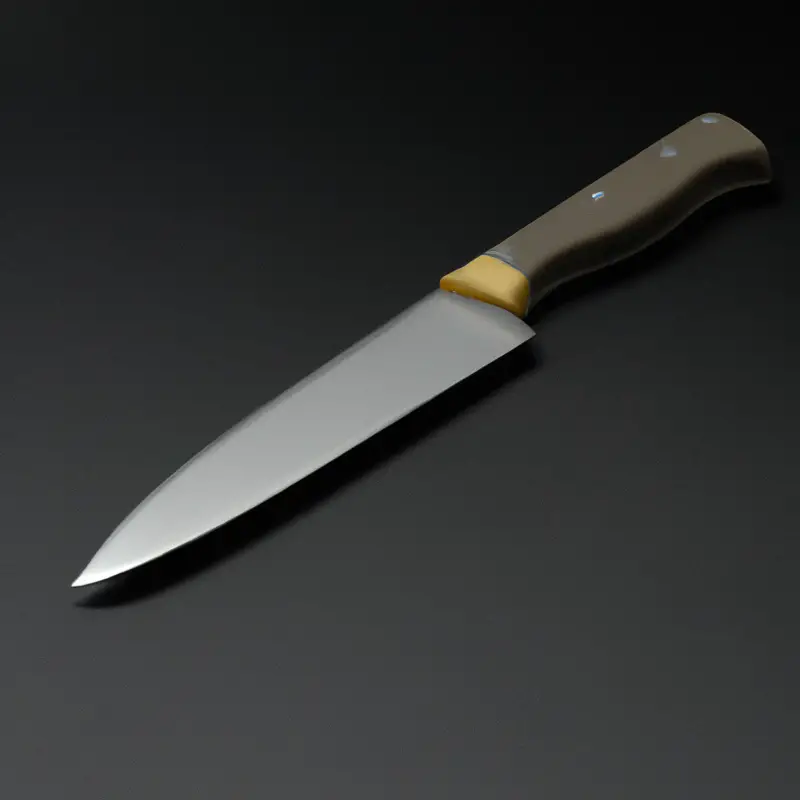
Avoiding common mistakes while using a chef knife to prevent injuries
Avoiding common mistakes while using a chef knife is crucial to prevent injuries in the kitchen. Here are some tips to keep in mind:
- Don’t use a dull knife, as it requires more force and is more likely to slip.
- Avoid cutting towards your body or anyone else’s body.
- Don’t hold the knife with a loose grip as it can slip while chopping.
- Keep your fingers and thumb tucked in while chopping to prevent accidental cuts.
- Never leave the knife in the sink or on a countertop where it can be easily knocked over.
- Don’t use the knife to pry open cans or packages, as it can damage the blade and cause injury.
- Avoid using a chef knife for inappropriate tasks, like chopping bones or frozen food.
By following these simple precautions, accidents and injuries while chopping can be minimized, ensuring a safer and more efficient culinary experience.
The significance of keeping your blade sharp and tips for maintaining its sharpness
Maintaining a sharp blade is crucial to achieving a clean and efficient chop. A dull blade can slip and cause injury, or crush the food rather than slicing it.
Here are some tips for maintaining the sharpness of your blade:
- Use a honing steel regularly to straighten the blade’s edge.
- Sharpen the blade occasionally using a sharpening stone or an electric sharpener.
- Store your knife in a knife block or a sheath to protect the edge.
- Only use your knife on appropriate cutting surfaces like wood or plastic; avoid metal, glass, or ceramic.
- Clean the blade after use to prevent rust or damage.
By following these maintenance tips, your blade will stay sharp, and you can chop with precision and ease.
Using the pinch grip technique for added stability and control while chopping
Using the pinch grip technique is one of the most effective ways to enhance stability and control while chopping with a chef knife. This grip involves placing your thumb and index finger on opposite sides of the blade, while the remaining three fingers grip the handle.
By applying pressure on the blade with your thumb and index finger, your hand remains steady, and you can control the knife’s movement with greater ease.
This technique also promotes a more natural and comfortable grip, reducing hand and forearm fatigue. It is essential to maintain a relaxed grip that allows for fluid movement and avoids causing strain or tension in the hands and wrists.
When using the pinch grip technique, ensure that your blade is sharp, and your cutting board is stable to minimize accidents.
With practice, you can master this grip and enjoy safe and efficient chopping experiences in your kitchen.
Tips on practicing and honing your knife skills to become a proficient chef
To become a proficient chef, it is essential to practice and hone your knife skills. Here are some tips to help you improve your knife skills:
- Get comfortable with your knife: Spend time holding and using your knife to get comfortable with it.
- Focus on your technique: Practice the basic cutting techniques such as rocking, slicing, and chopping, and focus on getting them right.
- Develop a good grip: Hold the knife firmly, but not tightly, and use the pinch grip technique to add stability and control.
- Keep your knife sharp: A sharp blade is essential for precision cutting, so sharpen your knife using a sharpening stone or a honing rod regularly.
- Use the right knife for the job: Each type of knife has a specific purpose, so make sure to use the right knife for the job to get the best results.
- Practice, practice, practice: The more you practice, the better you will become at using your knife. Set aside time each day to practice your skills.
By implementing these tips, you can improve your knife skills and become a proficient chef.
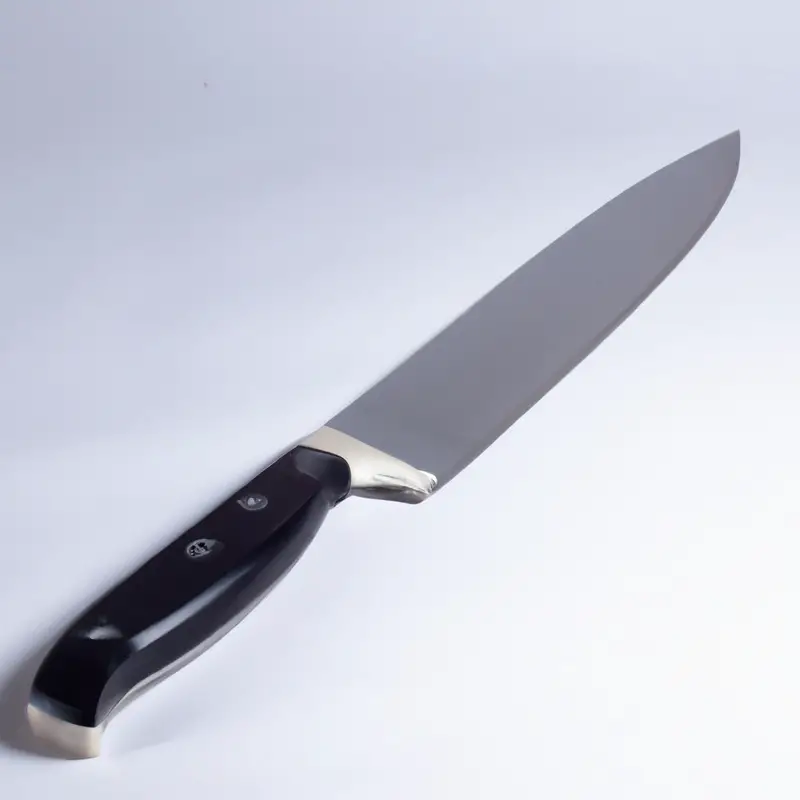
Common types of cuts and suitable applications of the chef knife for each
Common types of cuts and suitable applications of the chef knife for each:
- Julienne Cut: This cut involves slicing vegetables and fruits into long, thin strips. It is suitable for making stir-fries, salads, and garnishes.
- Brunoise Cut: In this cut, the food item is cut into tiny dice-like cubes. It is ideal for soups, stews, and sauces.
- Chiffonade Cut: This cut involves shredding vegetables such as lettuce and herbs into thin ribbons. It is perfect for garnishing dishes and making salads.
- Dice Cut: This cut involves chopping food items into uniform squares. It is ideal for making soups, stews, and salads.
- Mince Cut: This cut involves slicing food items into tiny pieces. It is suitable for making minced meat or garlic.
- Bias Cut: This cut involves slicing food items at an angle. It is perfect for creating attractive presentations for fruits and vegetables.
To achieve these cuts, it is important to use a sharp chef knife. The length and weight of the knife also play a crucial role in achieving precise cuts.
It is recommended to use a 6-8 inch chef’s knife for most cutting tasks.
Keep in mind that the type of cut you make depends on the recipe and the desired outcome. The more practice you have, the more precise your cuts will become.
So keep practicing and perfecting your knife skills to become a proficient chef.
How to choose the right chef knife based on your culinary needs and preferences
Choosing the right chef knife boils down to your culinary needs and preferences. Consider the following when selecting a knife:
- Blade Material: High-carbon stainless steel is a popular choice for its durability and resistance to rust.
- Blade Thickness: Thinner blades are ideal for precise cuts, while thicker blades are better for heavier tasks.
- Blade Length: A standard blade length is 8 inches, but consider a shorter or longer blade based on your needs.
- Handle Comfort: Choose a handle that provides a comfortable yet secure grip.
- Budget: Chef knives can range from affordable to exorbitant, so determine your budget beforehand.
Consult with experts, read reviews, and test the knife’s weight and balance. Ultimately, the right chef knife should feel comfortable in your hand and make your culinary tasks more efficient and enjoyable.
Proper cleaning and storage techniques to maintain the longevity of your chef knife
To keep your chef knife in top condition and ensure its longevity, proper cleaning and storage techniques are essential. Always hand wash your knife with warm water and mild soap immediately after use, and dry it thoroughly with a towel.
Avoid putting it in the dishwasher, as the harsh detergents and high temperatures can damage the blade.
Store your knife separately from other utensils in a knife block or a knife sheath to prevent damage to the blade and to avoid accidental injury. Never store a knife loosely in a drawer where it can be easily damaged or cause injury.
To maintain its sharpness, regularly hone the blade using a honing rod, and if necessary, sharpen the blade using a sharpening stone or a professional sharpening service.
Regular maintenance and proper storage of your chef knife will not only keep it looking and functioning like new but will also ensure safe and efficient use in the kitchen for years to come.
Ways to test your chopping skills and evaluate your progress
To test your chopping skills and evaluate your progress, try performing different types of cuts with your chef knife, such as dice, julienne, and chiffonade. Use a timer to track how long it takes you to complete each cut and try to improve your speed while maintaining accuracy.
Additionally, try cutting through various types of ingredients with different textures like vegetables, meat, and fish to challenge your technique.
You can also ask for feedback from a more experienced chef or take a cooking class to further hone your skills. Consistent practice will help you become more proficient with your knife and increase your confidence in the kitchen.
The art of using a chef knife for speed and efficiency in the kitchen
The art of using a chef knife for speed and efficiency in the kitchen requires practice and mastery of technique. Utilizing the rocking motion is essential to maximize slicing efficiency, while maintaining a sharp blade ensures clean, swift cuts.
The pinch grip technique provides added control and stability, allowing for precision chopping.
A proficient chef keeps their knife skills honed through consistent practice and proper maintenance of their tools. By perfecting these skills, one can increase their speed and efficiency in the kitchen, ultimately saving time and effort while cooking.
Advice on how to confidently and safely use a chef’s knife as a beginner
As a beginner chef, it’s important to use your chef’s knife with confidence and safety. Here are some essential tips to ensure a smooth and injury-free chopping experience:
- Invest in a good quality chef’s knife that feels comfortable in your hand and suits your skill level.
- Use a firm grip with your dominant hand and place your index finger and thumb on either side of the blade’s base for control.
- Position your food item securely on a stable surface and keep your fingers curled away from the blade’s path.
- Master the rocking technique by placing the tip of the blade on the cutting board and gently moving the knife back and forth with a rolling motion.
- Keep your blade sharp with regular honing and sharpening to prevent slips and cuts.
- Always use a cutting board made of wood or bamboo to maintain your knife’s sharpness and prevent damage.
- Avoid trying to cut through hard bones and use a cleaver or serrated knife instead.
By following these tips, you can confidently and safely use your chef’s knife as a beginner, enhancing your chopping experience while avoiding injuries along the way.
Final Verdict
Mastering the proper use of a chef knife can elevate your culinary skills to a whole new level. From understanding its anatomy to adopting the right grip techniques and cutting board materials, a chef knife has a crucial role in every kitchen.
By focusing on optimal control, precision, and safety, you can chop with confidence and efficiency.
Furthermore, keeping your blade sharp and practicing regularly can lead to remarkable progress and accomplishment in the world of cooking. Remember to invest in a high-quality chef knife that suits your needs and preferences, and follow the recommended cleaning and storage guidelines to maintain its longevity.
With these invaluable tips and insights, you can become a proficient chef and impress your guests with your knife skills.
So, go ahead and sharpen your chef knife, and chop like a pro!

